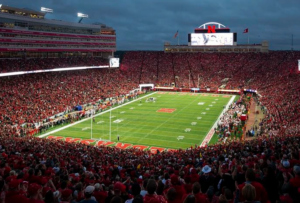Large renovation projects will be abundant in 2024
In past years, it was likely more difficult for companies to categorize renovation and repair projects as highly attractive. That might not be the case anymore. Public entities throughout the U.S. are designing extremely large renovation projects, and without a doubt these upcoming projects will be attractive to firms of all types and sizes. Repair and maintenance costs related to public assets and government facilities represent a substantial proportion of government spending. A decade ago, government officials spent 55% of all infrastructure funding on maintenance and repair. Now, however, more than 60% of the total funding is spent on repairs, renovation and upkeep. That represents billions of dollars each year that will be spent on large projects such as the ones described in this column.
A 50,000-square-foot construction project is slated at Indiana University-Purdue University. It will expand and enhance lab space to address the growing needs in the school’s STEM research and instruction. The $60 million expansion will also include renovations to existing labs. The project will address comprehensive upgrades to critical equipment – mechanical, electrical, plumbing and air-exchange systems. It will also include integrating cutting-edge technology needed to modernize, upgrade and improve lab operations.
This project is part of a larger investment of more than $250 million, which will be spent to promote the university’s scientific research on curing disease. The investment, one of the largest by leading universities nationwide, will also fund two new research institutes, recruit additional life sciences faculty and further support the development of other new and renovated facilities. The design phase for this project will occur in 2024, and solicitations will be issued as soon as it is completed. Currently, it appears that work on the project will begin in early 2025.

The Nebraska Memorial Stadium, courtesy of the University of Nebraska.
The University of Nebraska’s Board of Regents recently approved an extensive $450 million renovation of the university’s Memorial Stadium. The funding allocation coincides with the stadium’s centennial. The initiative will include project components designed to accomplish numerous goals, including drawing families to sports events, enhancing the experience for spectators and preparing the stadium for the next century of use.
Major renovations will include demolishing parts of the south stadium and installing general-seating chairs, adding more seating capacity in the west and east stadiums and creating a 360-degree main-level concourse. ADA compliance will be a high priority, along with expanded concession space, enhanced restrooms and other amenities. The university will provide at least $50 million from its internal lending fund, and other funding will come from other sources.
The iconic, 65-acre MacGregor Park in Houston will undergo broad renovations at a cost of $54 million under the supervision of the Houston Parks Board. The renovations will cover a long list of improvements outlined in the plan. The Homer Ford Tennis Center will be upgraded to a world-class facility capable of hosting tournaments, and the swimming pool and community center will be renovated. Other improvements will include a new amphitheater, an expansion to the park’s perimeter trail and building an ADA-accessible playground. The trail expansion will help tie MacGregor Park to surrounding bike trail networks. Beloved landmarks such as the park’s covered basketball court, considered one of the best outdoor courts in the world, will be preserved alongside the improvements.
With funds secured from a mixture of public and private sources, the Houston City Council approved the plans in December. Project design will be carried out in 2024, with plans to break ground in 2025.
In December, council members in Riverside, California, approved design renderings for the renovation and expansion of the Museum of Riverside. Solicitation documents will be issued soon. The museum, originally built as a U.S. Post Office, will undergo massive restructuring, but the historic 1912 structure will be preserved. A two-story addition on the back of the building will be constructed after the demolition of more recent additions. The project currently carries an overall project cost projection of $45 million.
When completed, the museum will have a dedicated classroom, a roof terrace that accommodates approximately 100 people, an improved Nature Lab on the first floor and new galleries. The historic and new structures will be linked by a bridge, elevator and staircase.
Voters in Queensbury, New York, recently approved funding for a project to renovate Queensbury Elementary School at an estimated cost of $39 million. With the conceptual development phase currently underway, construction is slated for 2025. Project priorities include modernizing the 55-year-old building, creating flexible spaces that include common learning areas and providing a cafeteria that can double as a gym or auditorium. Roof replacement, HVAC equipment replacement and upgraded restrooms will also be included, and two new elementary playgrounds will be added. In addition to the full renovation of the elementary school, this project will also consist of upgrades to the district’s middle and high schools.
Following funding approval by the Michigan legislature, a project to renovate Eastern Michigan University’s Roosevelt Hall, a $42.5 million project, will soon be launched. The project is part of a larger initiative to bolster and expand the university’s College of Engineering and Technology. The project is currently in the design phase, with construction slated for mid to late 2024. Plans call for revitalizing and renovating 75,639 square feet of space. The project will deliver modern student advising centers, collaborative working spaces and faculty offices.
Recently ranked among the best public universities for undergraduate engineering programs, this project will be designed to support a projected 65% increase in enrollment for the engineering and technology program over the next decade.

 512-531-3900
512-531-3900 Request More Info
Request More Info
